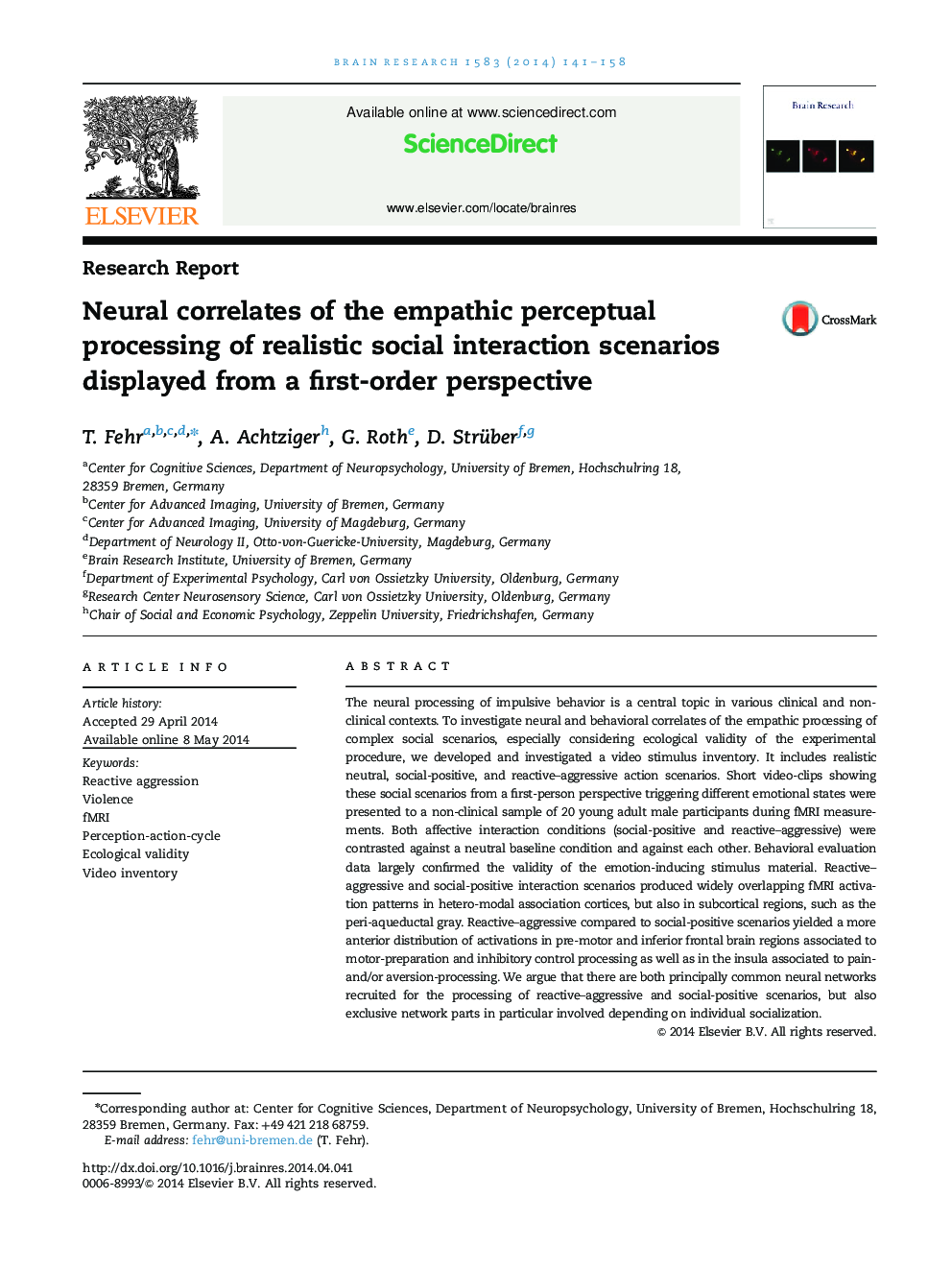| Article ID | Journal | Published Year | Pages | File Type |
|---|---|---|---|---|
| 4324150 | Brain Research | 2014 | 18 Pages |
•Ecological validity was facilitated by the presentation of realistic social scenarios.•First-person-perspective facilitated the involvement into the presented scenarios.•Data reliably resembles heterogeneous outcomes from earlier topic-related studies.•Violence-related and positive stimuli recruit large parts of similar neural resources.•Peri-aqueductal gray activation provides the link to animal science on aggression.
The neural processing of impulsive behavior is a central topic in various clinical and non-clinical contexts. To investigate neural and behavioral correlates of the empathic processing of complex social scenarios, especially considering ecological validity of the experimental procedure, we developed and investigated a video stimulus inventory. It includes realistic neutral, social-positive, and reactive–aggressive action scenarios. Short video-clips showing these social scenarios from a first-person perspective triggering different emotional states were presented to a non-clinical sample of 20 young adult male participants during fMRI measurements. Both affective interaction conditions (social-positive and reactive–aggressive) were contrasted against a neutral baseline condition and against each other. Behavioral evaluation data largely confirmed the validity of the emotion-inducing stimulus material. Reactive–aggressive and social-positive interaction scenarios produced widely overlapping fMRI activation patterns in hetero-modal association cortices, but also in subcortical regions, such as the peri-aqueductal gray. Reactive–aggressive compared to social-positive scenarios yielded a more anterior distribution of activations in pre-motor and inferior frontal brain regions associated to motor-preparation and inhibitory control processing as well as in the insula associated to pain- and/or aversion-processing. We argue that there are both principally common neural networks recruited for the processing of reactive–aggressive and social-positive scenarios, but also exclusive network parts in particular involved depending on individual socialization.
